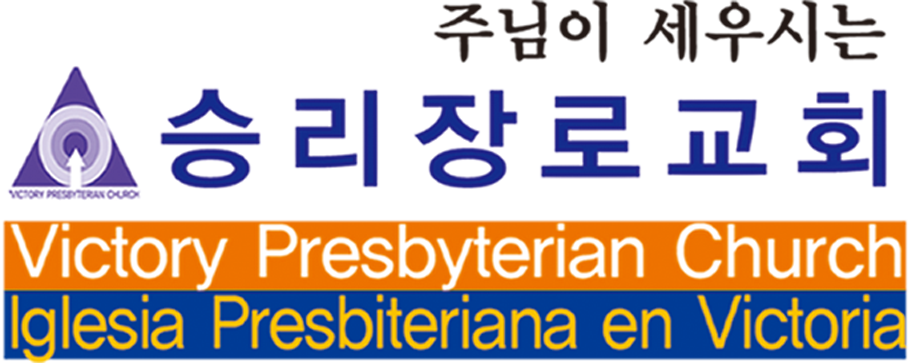“Bethlehem,” “Manger,” “Swaddling Cloths”
“And while they were there, the time came for her to give birth, and she gave birth to her firstborn son. She wrapped Him in swaddling cloths and laid Him in a manger, because there was no room for them in the inn” (Luke 2:6–7).
I want to meditate on this passage, focusing on three words and receiving the grace given through them:
(1) The first word is “Bethlehem” (Luke 2:6, Modern Korean Bible).
(a) The Korean Revised Version translates it as “there,” but the Modern Korean Bible renders it explicitly as “Bethlehem.” The “there” in the Revised Version clearly refers back to “the town of David, called Bethlehem” (v. 4). Therefore, the Modern Korean Bible’s rendering of “Bethlehem” is fitting.
(b) As we already know, “Bethlehem” is the place where baby Jesus Christ, the Messiah, was born.
(i) This was foretold by the prophet Micah around 700 years earlier, who prophesied that the Messiah would be born in Bethlehem: “But you, Bethlehem Ephrathah, though you are small among the clans of Judah, out of you shall come for me one who will be ruler over Israel, whose origins are from of old, from ancient times” (Micah 5:2, NIV).
· Matthew cited this prophecy in Matthew 2:6, when the magi came to Jerusalem asking, “Where is the one who has been born king of the Jews?” (Matt. 2:1–2). When King Herod inquired of the chief priests and teachers of the law, they answered, “In Bethlehem of Judea… for this is what the prophet has written” (vv. 3–6).
-
Thus, just as Micah had prophesied, Jesus Christ was indeed born in Bethlehem (Matt. 2:1–6; Luke 2:4, 15).
(c) While meditating, I was drawn to Matthew 2:6: “But you, Bethlehem, in the land of Judah, are by no means least among the rulers of Judah; for out of you will come a ruler who will shepherd my people Israel.”
The NASB translates it well: “LAND OF JUDAH, ARE BY NO MEANS LEAST AMONG THE LEADERS OF JUDAH.”
· This phrase connects Bethlehem not just with being a small town, but with being a place from which leaders arise. Indeed, in 1 Samuel 16, God sent Samuel to Jesse of Bethlehem, from whose sons He had chosen a king—David. Later, in 1 Samuel 17, David the son of Jesse of Bethlehem defeated Goliath in the name of the Lord.
-
So Bethlehem, though “small among the clans of Judah” (Micah 5:2), was not “least among the rulers of Judah” (Matt. 2:6), because King David came from there—and from David’s line the Savior, Jesus Christ, was born (Luke 2:6, 15–16).
(2) The second word is “Manger” (Luke 2:7).
(a) In first-century Judea, a manger (Greek: φάτνη) was usually a feeding trough made of stone or clay, found in stables or caves where animals were kept. It was common, ordinary, and intended not for people but for animals’ food. Mention of a manger would immediately call to mind the simple life of farmers.
(i) Into such an ordinary, unattractive manger—designed for animals, not people—the Savior, Christ Jesus, was laid (Luke 2:7), because “there was no room in the inn.”
-
This fulfills Isaiah 53:2: “He grew up before him like a tender shoot, and like a root out of dry ground. He had no beauty or majesty to attract us to him, nothing in his appearance that we should desire him.”
The manger thus reflects Christ’s humble beginning, foreshadowing His obedience “to the point of death—even death on a cross” (Phil. 2:8).
(b) Just as the manger was not attractive outwardly, neither was Jesus’ appearance (Isa. 53:2). The true glory lies not in outward splendor, but in obedience and suffering for God’s will.
(c) While meditating on the manger, I was reminded of Moses’ basket (Exod. 2:3), also called tebah (תֵּבָה) in Hebrew, the same word used for Noah’s ark. Both represent God’s means of preserving life through judgment and bringing about salvation.
In the same way, the manger of baby Jesus symbolically served as His ark, preserving the Savior who would bring eternal life and freedom from sin.
(3) The third word is “Swaddling Cloths” (Luke 2:7, 12).
(a) Wrapping newborns tightly in strips of cloth was a common ancient Near Eastern practice, symbolizing warmth, protection, cleansing, and incorporation into the covenant community (cf. Ezek. 16:4). Luke’s mention shows that, despite poverty and rejection, Mary cared for Jesus with faithful, covenantal love.
(b) While meditating on the swaddling cloths, I was reminded of the linen cloths in John 19:40, used to wrap Jesus’ body after His death.
Thus, His being wrapped in cloth at birth (Luke 2:7, 12) corresponds with His being wrapped in linen at death (John 19:40).
· Both point to “the garments of salvation” (Isa. 61:10) and ultimately to the white robes of the redeemed: “They have washed their robes and made them white in the blood of the Lamb” (Rev. 7:14).
✅ In summary:
-
Bethlehem points to prophecy fulfilled and Christ’s royal lineage through David.
-
The Manger shows Christ’s humility and God’s plan of salvation through weakness.
-
The Swaddling Cloths connect His birth and death, pointing to salvation and the glory awaiting the redeemed.
